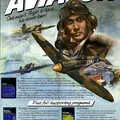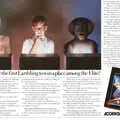
Acornsoft Advert - June 1984
From Personal Computer World
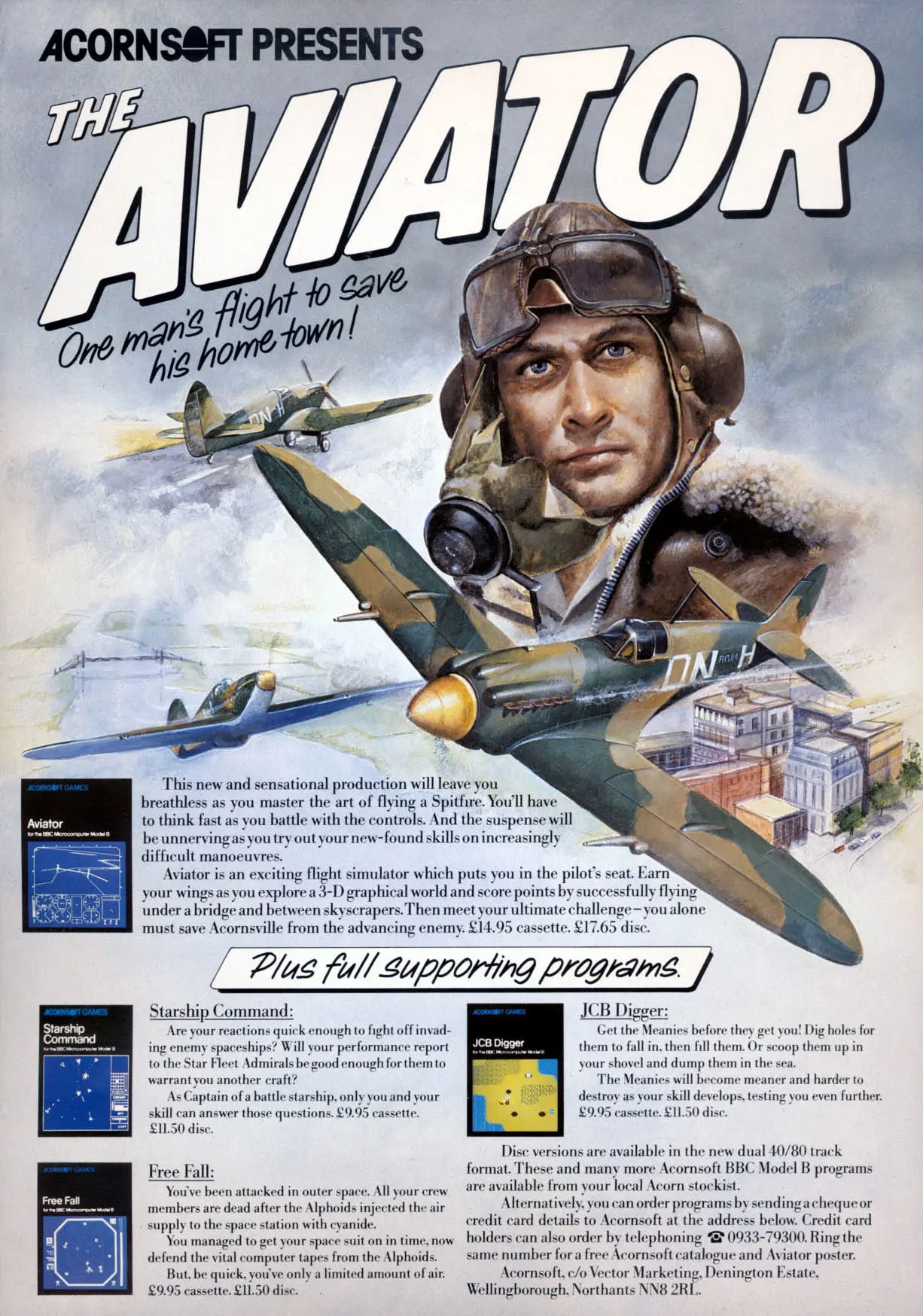
The Aviator - One man's flight to save his home town
The image above is a scan of the pre-press version of the advert and is used with permission. © Acornsoft Ltd 1985
This particular advert - which shows a Mark VI Spitfire of the RAF's 124 Squadron - appeared as an A2 poster inside June 1985's Personal Computer World and came from Acorn's software offshoot Acornsoft.
Acornsoft - which was founded in late 1980 - produced several ground-breaking games for the BBC Micro including this - Aviator - written by Geoff Crammond as a wire-frame game based on a Spitfire, with real physics and highly-immersive game play.
The aims of the game included flying under a bridge and through a city, although the latter could become a slightly confusing activity as Aviator didn't remove "hidden" lines. There were even extra points available for completing these activites upside-down.
There was also the oddly-named and anachronistic game-within-a-game called The Theme, which involved shooting down aliens before they overwhelmed your home town of Acornsville. Your Computer was surprised by this, and reported that:
"you can select a bizarre game scenario in which your neighbourhood is invaded not by the Heinkel bombers you might expect, but by mysterious alien giant cockroaches. These grow in the outlying meadows and eventually take off, drifting langorously towards the town. Let one through and your fate is sealed".
Your Computer was however impressed with the fact that even the physics of shooting was accurately modelled, as instead of the usual shoot-em-ups, where "imaginary guns seem to transcend physics with a muzzle velocity of light speed", you actually had to aim quite far ahead of a moving target if it was far away.
Aviator came about after Crammond had designed a system of high-speed 3D vector graphics for use in generating landscapes in software, and had been wondering how to use it commercially.
The BBC Micro that Crammond had programmed his graphics utilities on was unusual in that it had an analogue joystick port.
Rather than the more common switch joysticks - like those on the Atari 2600 - which could be temporarily moved to up, down, left, right or diagonal combinations, an analogue stick could be moved smoothly around and stopped at any position. This made it much more suitable for use in a flight simulator.
This ability was not lost on Crammond who decided not to do yet another tank-commander game but to create Aviator instead.
Reviewing several flight simulators in April 1987, Your Computer wrote about Aviator in what at first seems like quite negative terms:
"Among the video game community, Aviator is not particularly popular. Its graphics, although very smooth and fast, are restricted by memory limitations to black-and-white line drawings. It is also extremely difficult to operate successfully. There is no instant gratification to be had, and non-pilots have to read the manual thoroughly if they wish to last longer than a few seconds".
That was actually as a positive thing, given the unrealistic flight behaviours of many games at the time, however Aviator's realism was all the more surprising because Crammond had practically no real flying experience. The review continued:
"The reason that Aviator is in many ways the simulator which most accurately mirrors the handling characteristics of a real plane is [Crammond's] experience as a physicist. Geoffrey developed his algorithms right from first principals, assessing the cause and effect of every force acting on the aeroplane, in this case an early Supermarine Spitfire".
Your Computer called it a "great shame" that recent developments at Acorn appeared to have left Aviator somewhat orphaned. It only ran on the standard BBC Micro - mainly because of its "convoluted copy protection" - and there were no plans to release versions for the newer BBC Master or Master Compact machines. Nevertheless, the review of the game concluded:
"Despite the unglamorous monochrome wire-frame graphics and the extreme silliness of the monster plague game scenario, Aviator is an all-time classic with a wonderfully responsive and realistic feel[1]".
Aviator was launched at the RAF Museum in Hendon, near London, with Air Vice Marshall Sandy Johnstone apparently saying that it was "just like the real thing", whilst standing in front of one of the Spitfire exhibits[2].
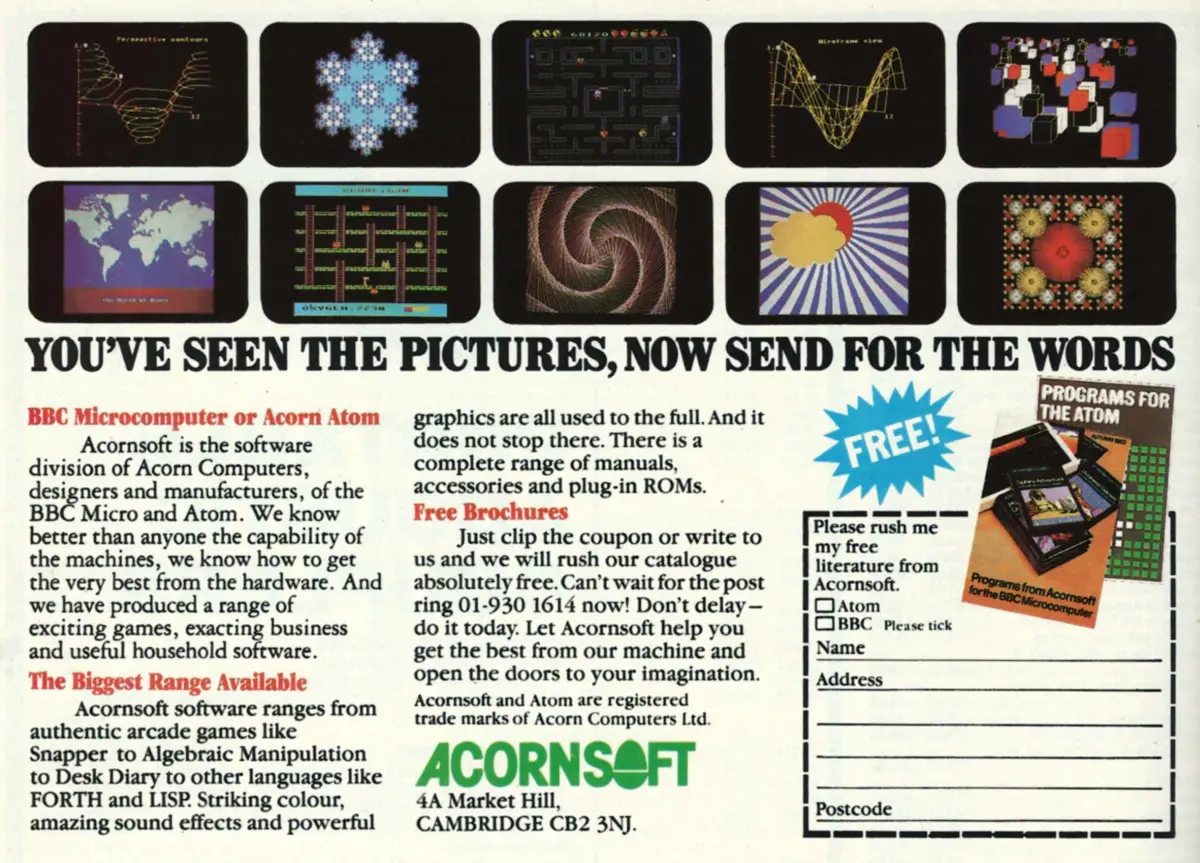
An advert for Acornsoft itself, as well as its software for the Atom and BBC Micro. From Personal Computer World, December 1982
During parent Acorn's financial crises of 1985, it had been suggested that Acornsoft might be sold, along with other subsidiaries Acorn Video, IQ Bio and a 25% share in Torus Systems, in order to raise money to keep Acorn afloat.
In then end, Olivetti injected yet more cash during the last week of July which increased the Italian company's holding to 79.8% and effectively completed a take-over by any other name, all of which at least meant that the sale of Acornsoft was no longer on the cards.
Geoff Crammond followed up with the racing game Revs. It was released as usual for the BBC via Acornsoft, but also distributed for all other (non-Z80) machines by BT's Firebird label.
Firebird's Herbert Wright said "It will be one of Firebird's fastest-ever projects. We will also expand the game to include Brands Hatch as well as Silverstone"[3].
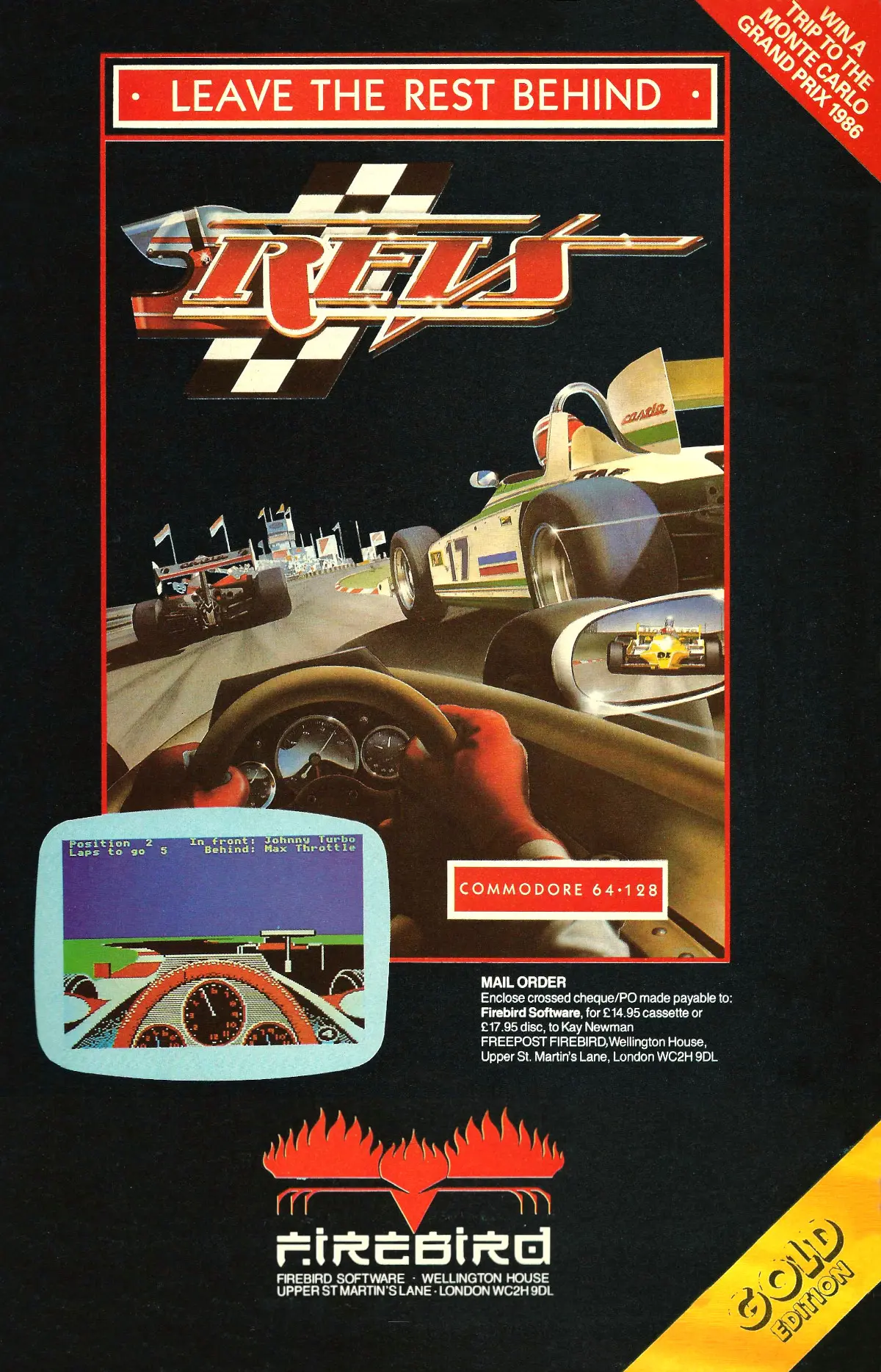
Firebird's Revs - for the Commodore 64 and 128. From Commodore User, January 1986
Meanwhile, Acornsoft's other more-famous game Elite became the first release of Firebird's New York operation Firebird Licencees Inc, when it was made available as a disk version for the Commodore 64 at $29.95[4].
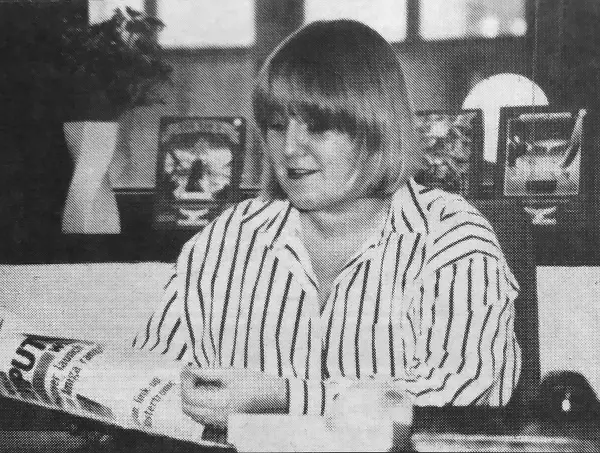
Paula Byrne, general manager of BT's Telecomsoft, reads a copy of Popular Computing Weekly, © Popular Computing Weekly March 1989BT's various software labels - Firebird, Rainbird, and Silverbird - came under the umbrella of its Telecomsoft group.
This had been set up when BT "was looking forward to the day when all games would be bought by telephone order" - a belief inspired by the company's previous experience with telesoftware on Prestel.
When this failed to actually happen, BT decided by the early spring of 1989 that entertainment software was "no longer consistent with the company's goals", according to Tom Baird of BT's Communication Systems Division[5].
A sale of the division had been on the cards for a while, but was held up for a couple of years whilst Telecomsoft got itself into better financial shape, the upshot of which was that by the end of 1988 it was turning over some £5 million.
BT then approached Telecomsoft's general manager Paula Byrne about selling the business, with Byrne interested in arranging a management buyout.
However, the two parties couldn't agree terms and so, after a period where BT had agreed not to approach other buyers, Telecomsoft went onto the open market, where it was eventually acquired by MicroProse UK[6].
Date created: 10 September 2020
Last updated: 11 December 2024
Hint: use left and right cursor keys to navigate between adverts.
Sources
Text and otherwise-uncredited photos © nosher.net 2025. Dollar/GBP conversions, where used, assume $1.50 to £1. "Now" prices are calculated dynamically using average RPI per year.
